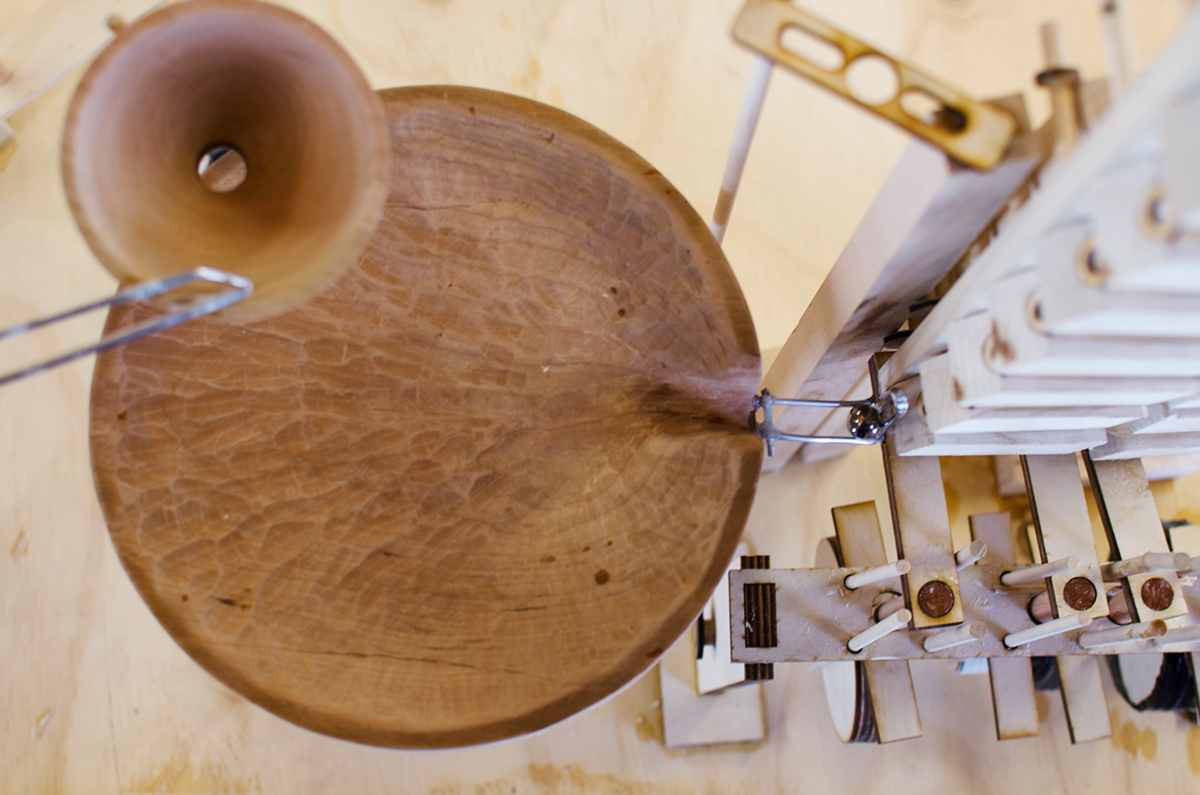Design Principles II, Spring 2016, Instructor: Liz Knight, Partner: Christina Strachoff
Mechanism Project: Marble Machine
An exploration of mechanisms to create a continuously looping marble machine.

Prompt | Timeline: 2 Weeks
Create a series of mechanisms to transfer movement.
Process
With my assigned partner, we decided that we would create a marble machine that utilized cams as the primary means of transferring the marbles. Before settling on this idea, I made two quick mechanism studies to gather further understanding as to how mechanisms work.
I first made a simple gear mechanism driven by a crank, which could translate vertical movement into movement on a horizontal axis.

Next, I made a simple mechanism that could transport a marble horizontally by turning a crank. I laser cut circular cams in order to provide flexibility as to where the cams were located. I also created two points of contact for each of the wooden components that would move up-and-down in order to generate greater stability for my model and so that the mechanism worked smoothly.
I created the marble path by milling blocks at an angle on a Bridgeport.

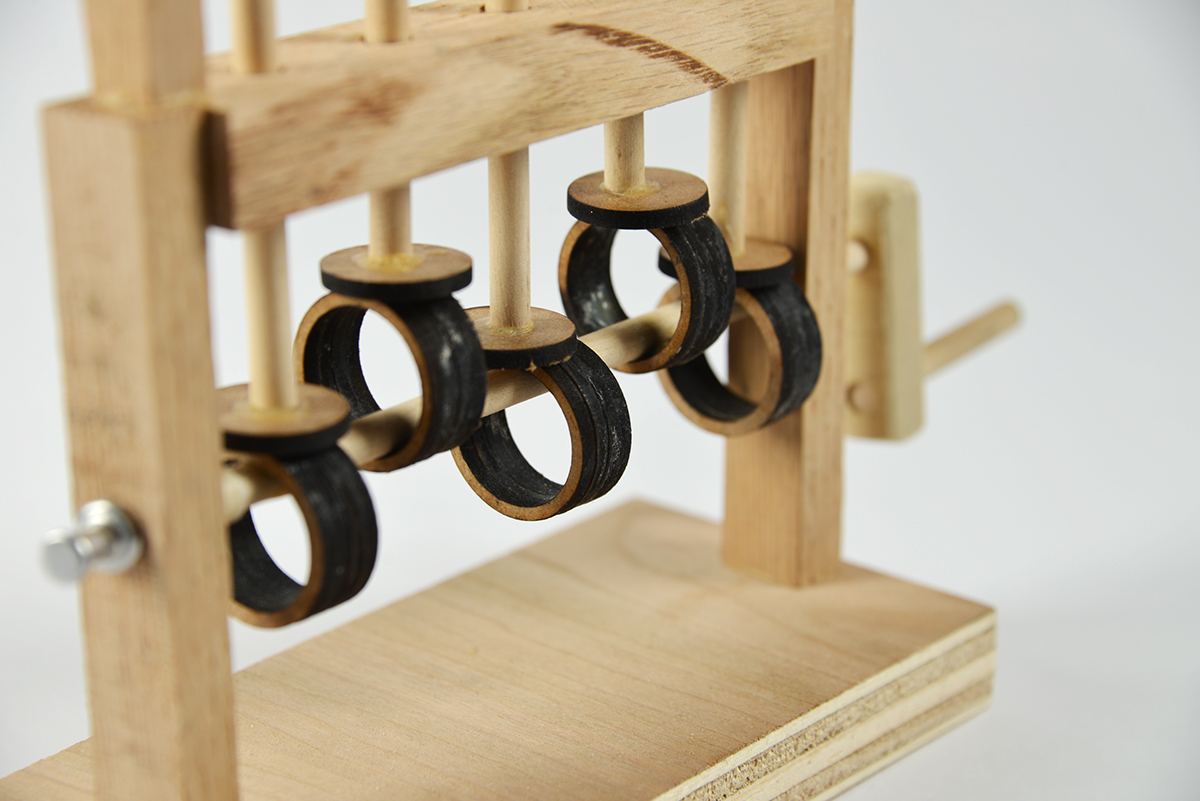

For the marble machine, my partner and I decided that we wanted to create a machine that would be cyclical. Below is a video of a run-through of the machine.
One aspect of the marble machine that I wanted to play with was the machine's size. I built the mechanism on the right side of the picture below, which would transfer the marble(s) upwards. By using a crank system and cams, these would shift the milled platforms, lending to the marble being moved back and forth between the sides of the ladder until it reached the top.
I calculated the various sizes of the cams in order for one side of the ladder structure to move a greater distance vertically. This was so that the marble could move easily back and forth between the ladder structures using gravity alone.

To prevent the marble from falling off the ladder, I glued stoppers onto the ends of the milled pieces. I also created a back structure out of wood in order to provide the ladder pieces greater stability.

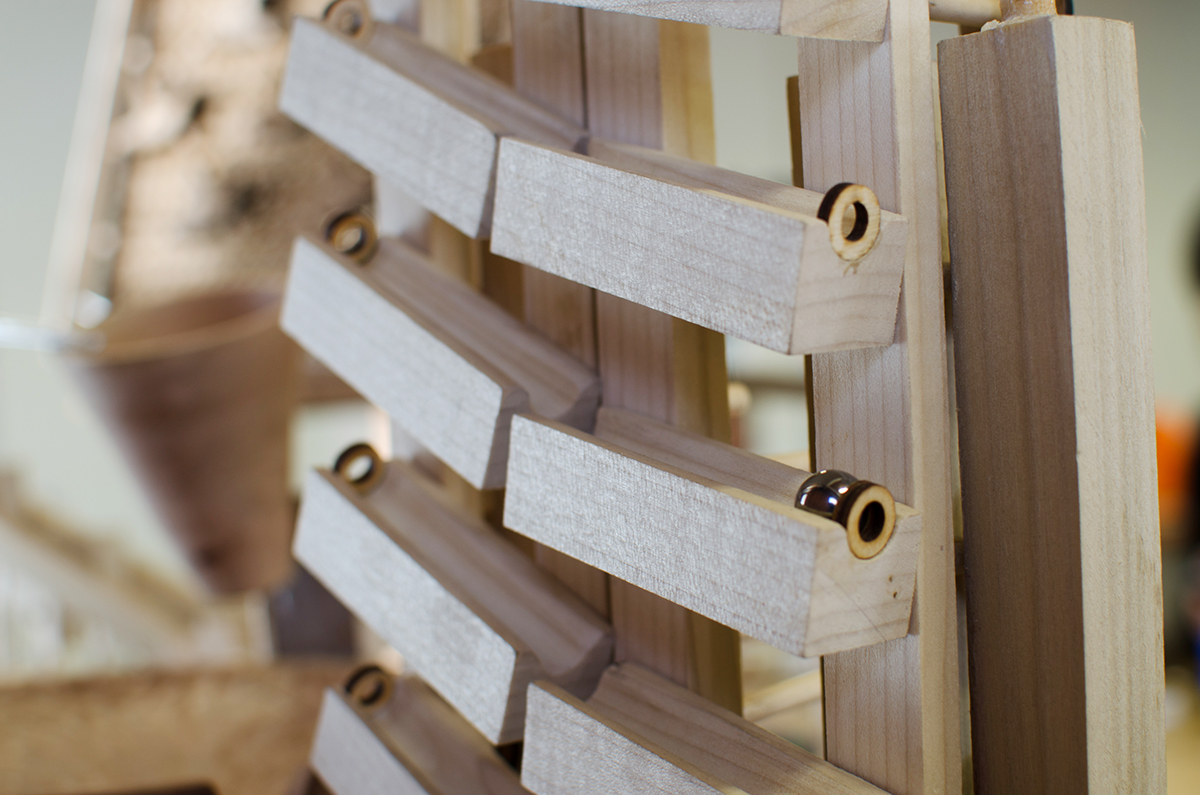
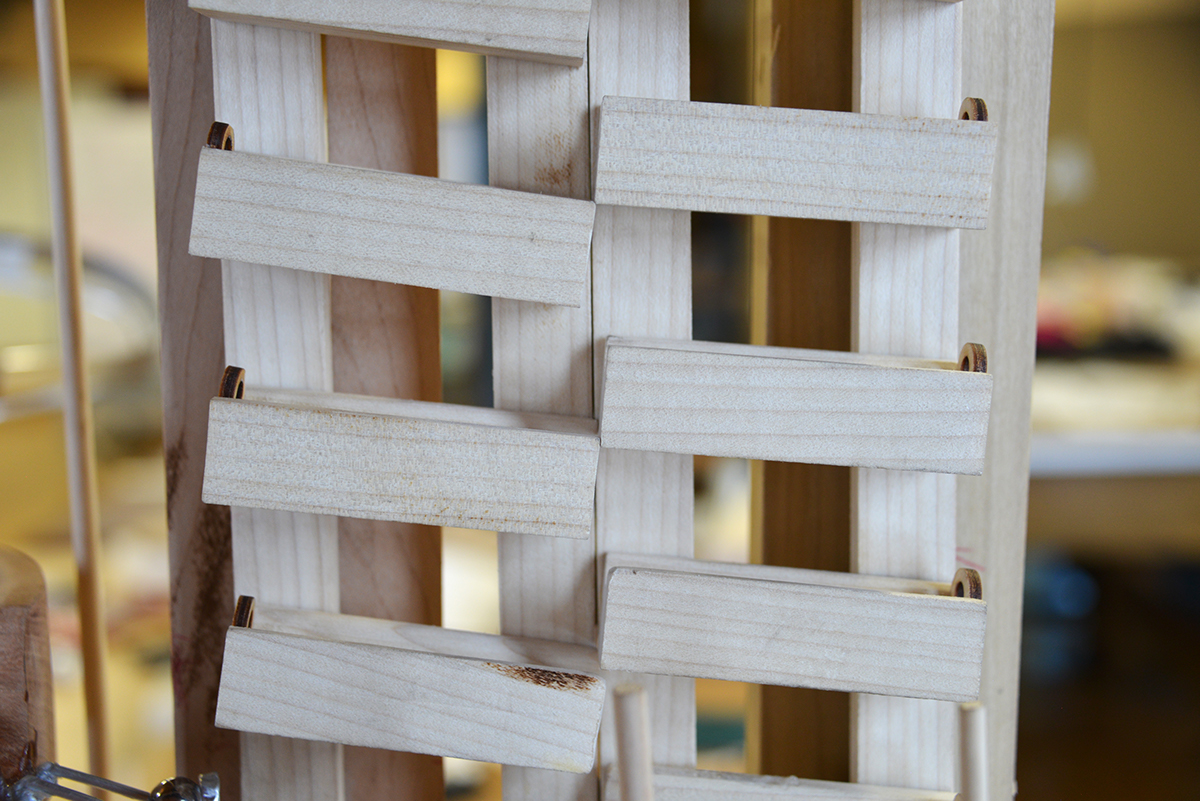
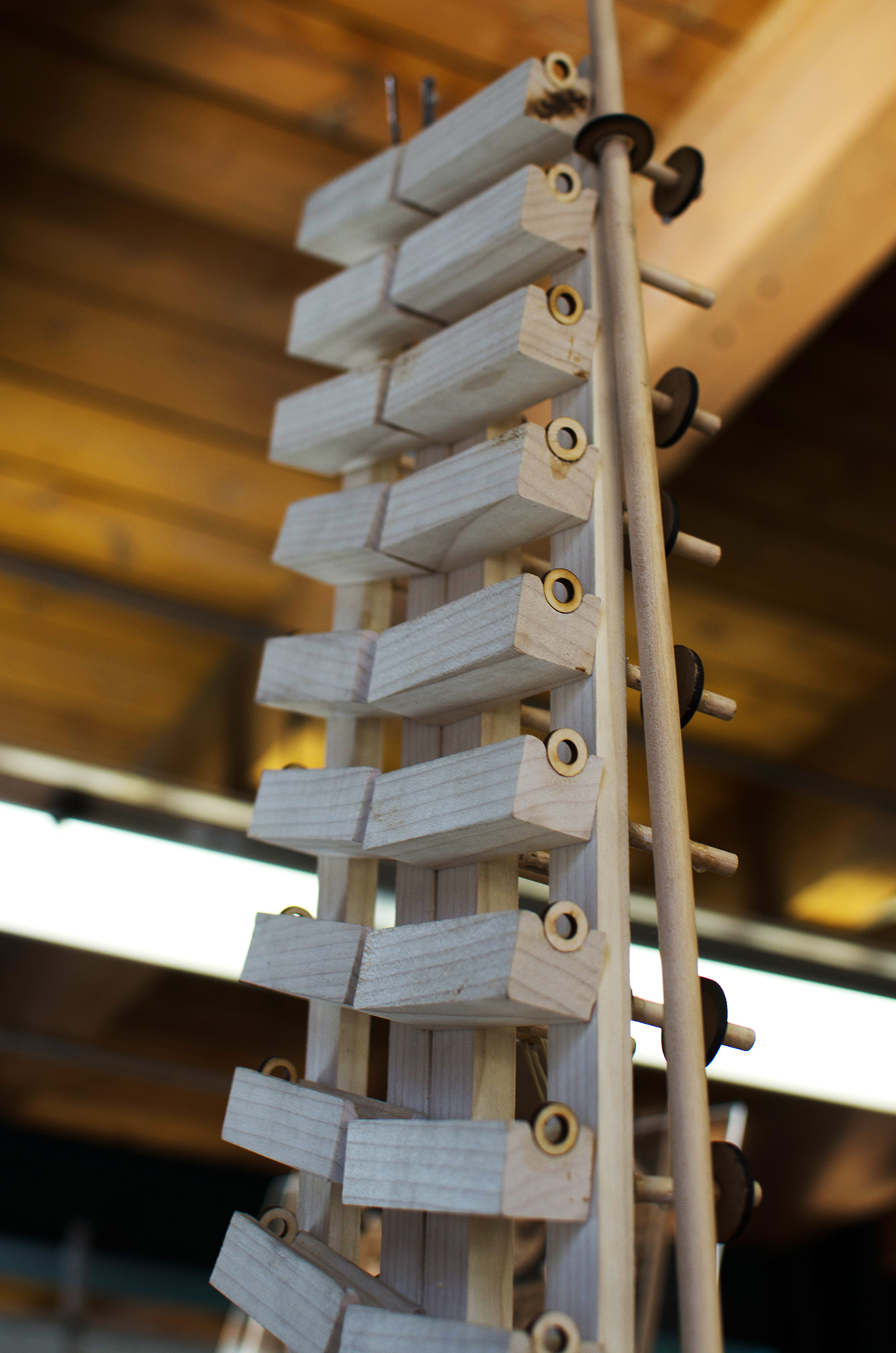
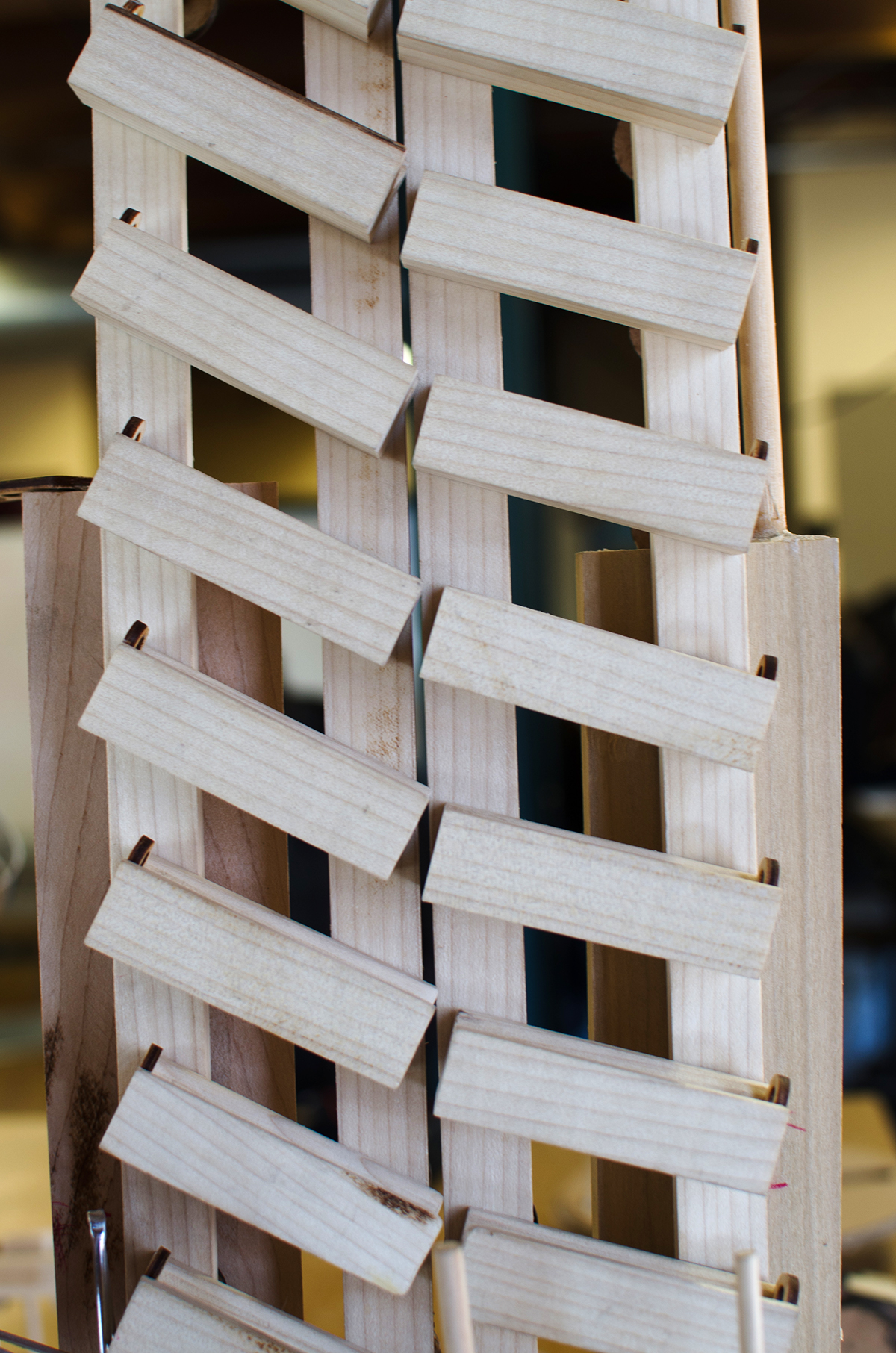
For the plinko board, I designed the laser cut files and assembled the plinko pieces. We figured that having dowels at the bottom of each piece would allow for greater horizontal control of the pieces, and overall would have more control of the marble.
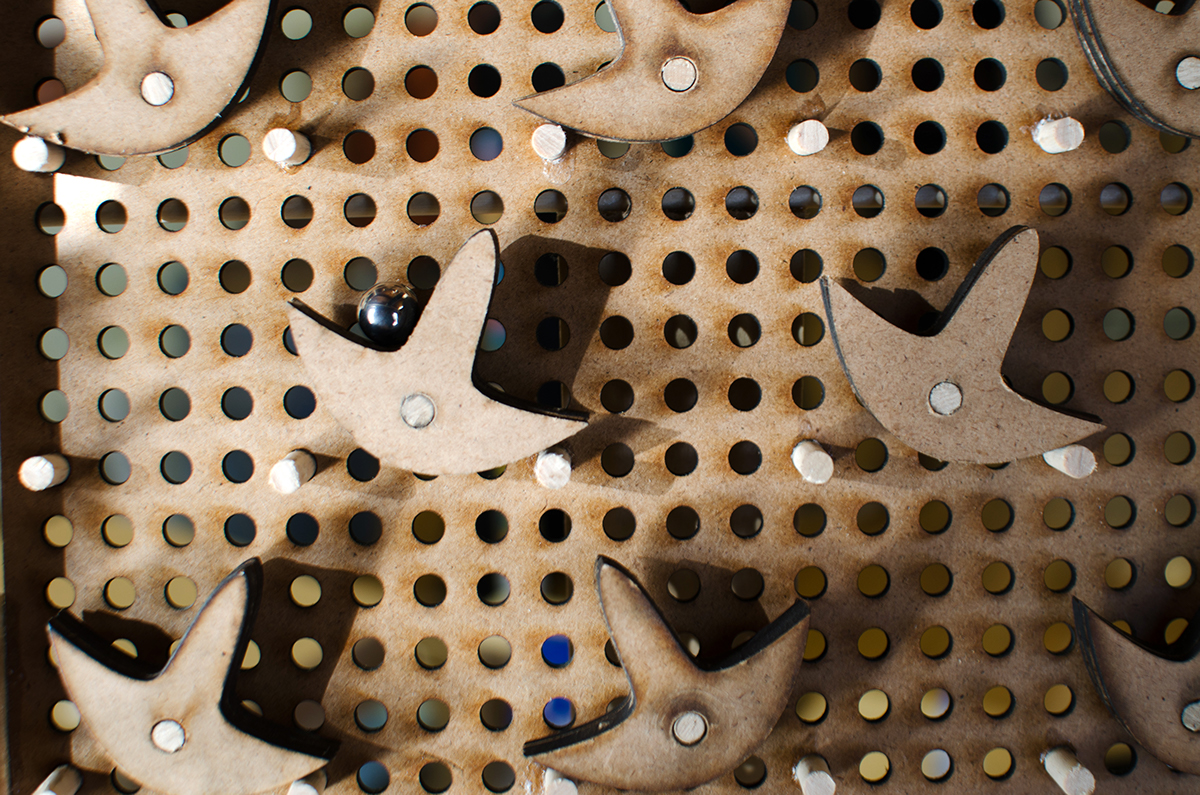
My partner assembled the cam system based on my original model, and we figured out that in order to move the marble vertically as well as horizontally, that we would need larger cams.
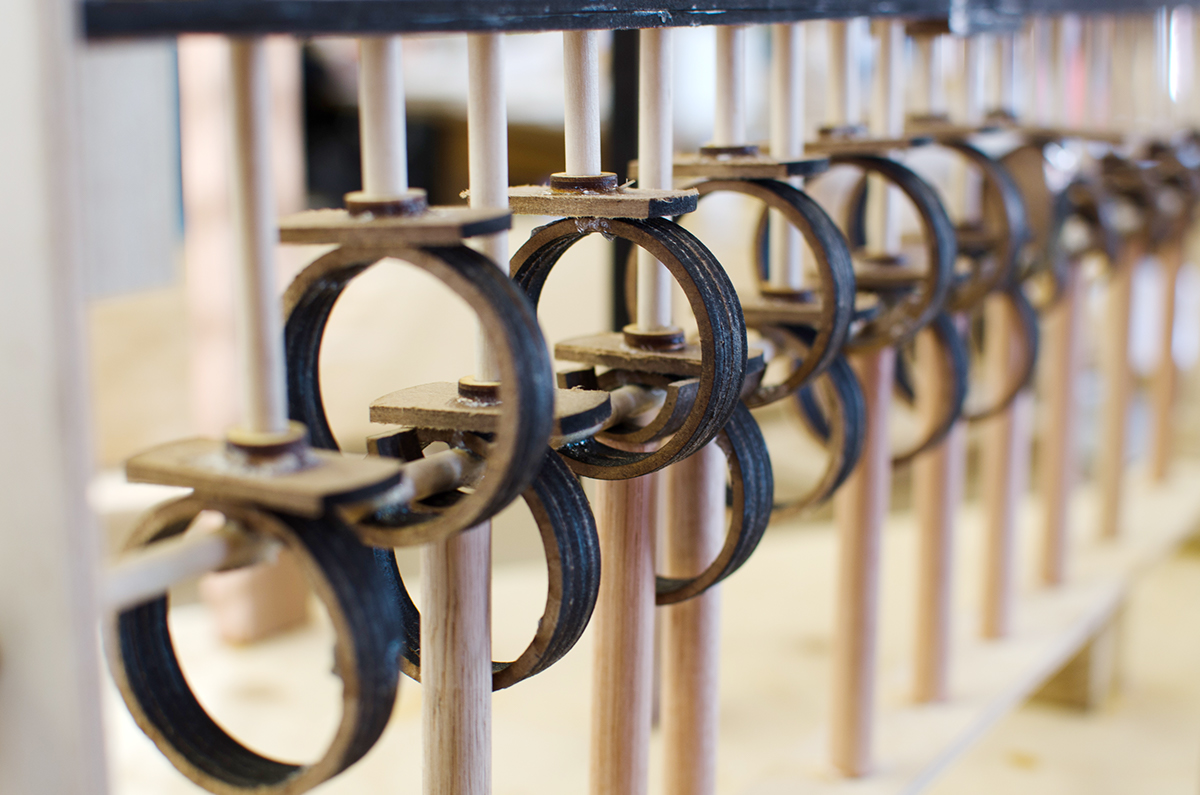

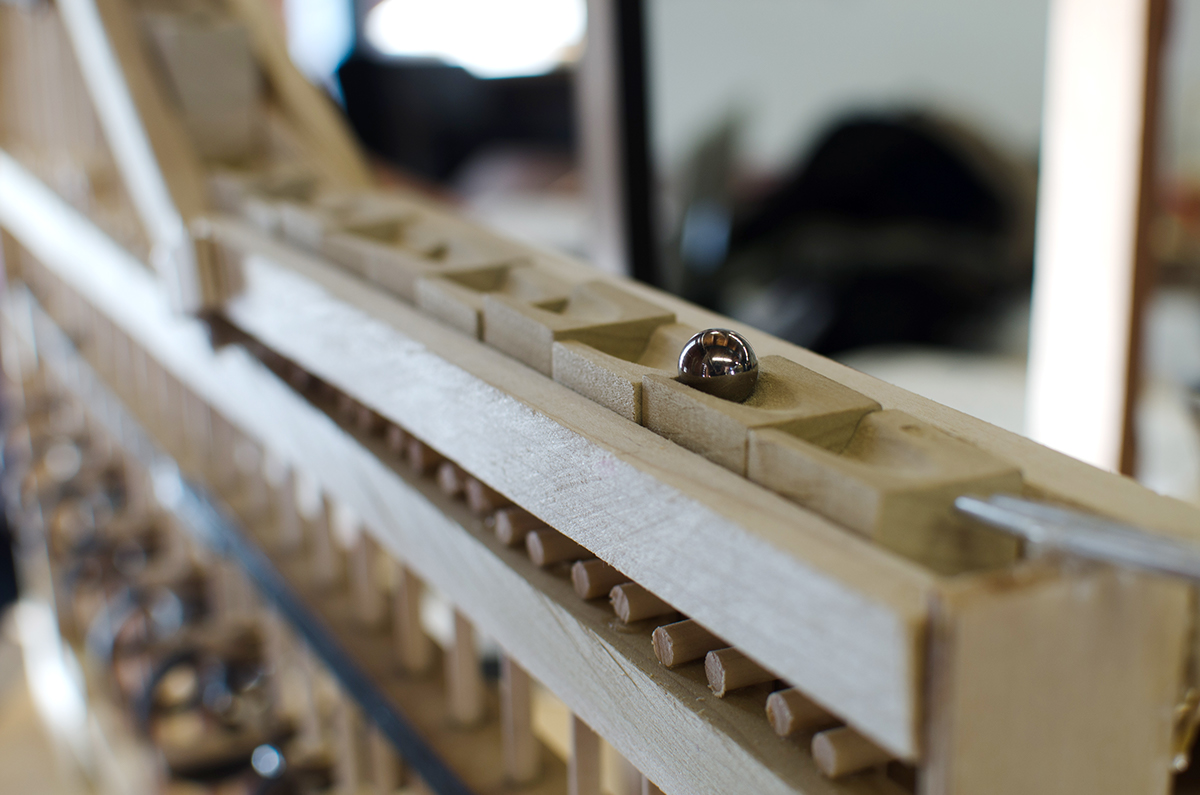
Using metal wires, we both generated paths in order to transfer the models between the mechanisms.

For the last part of the machine, I carved a tapered bowl out of cherry that would redirect the marbles to their starting position. I also faceplate turned a funnel for the marbles to go through.
